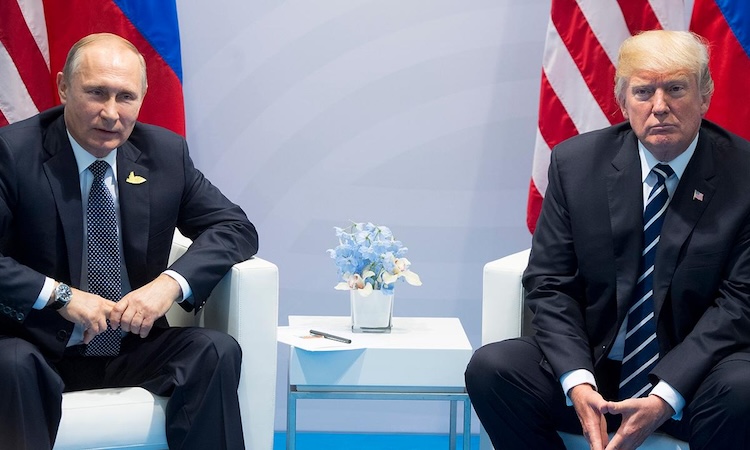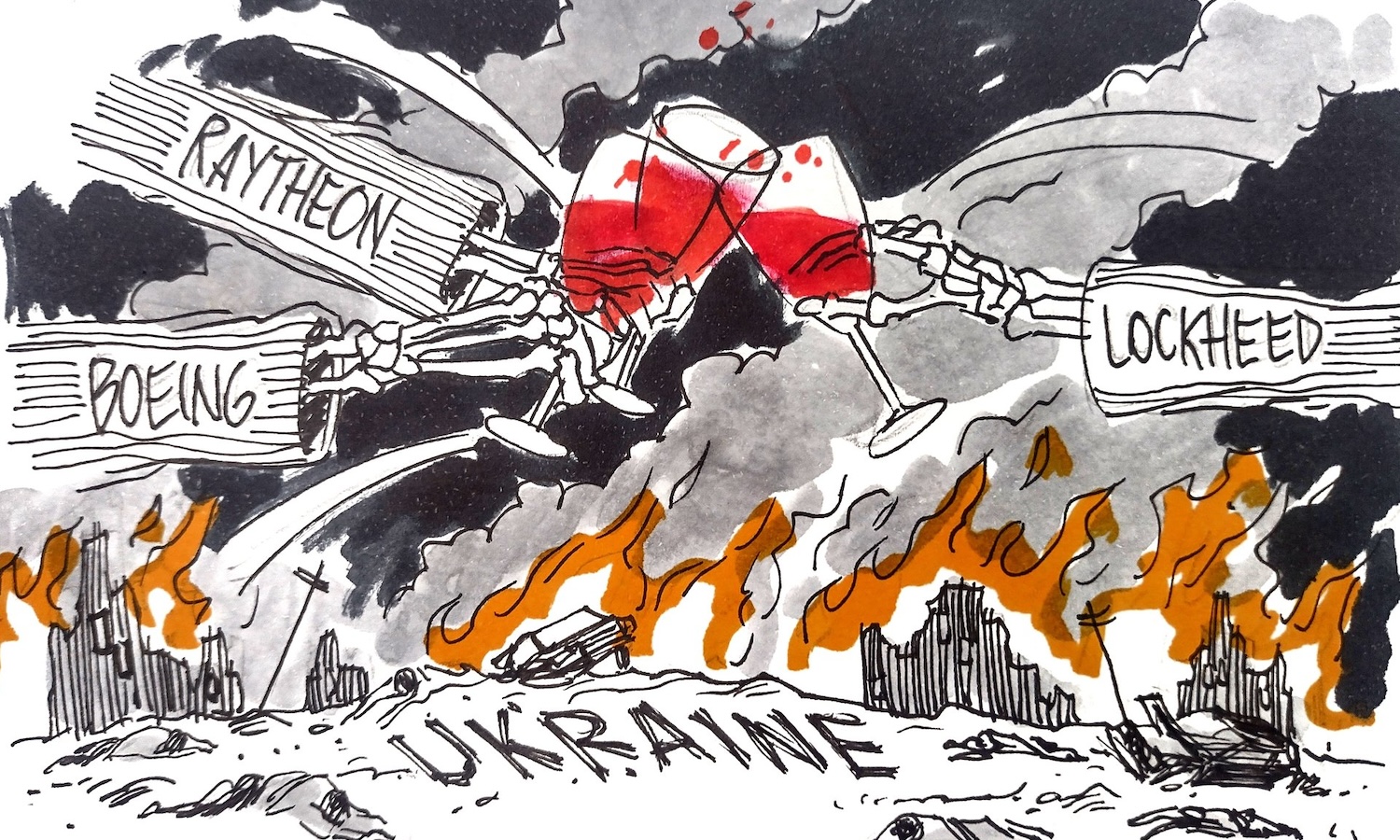This article is reproduced from InfoBrics with thanks.
*****
In recent weeks, much has been said about the political west’s (primarily US) ‘aid’ to the embattled Kiev regime. The US Congress has so far approved, or is in the process of approving, at least $54bn to Ukraine. In addition, various reports put the amount of European Union ‘aid’ at up to €10bn so far, although the actual number is most likely orders of magnitude higher. When put together, this pushes the publicly-acknowledged figure to a staggering $65bn, which is equivalent to Russia’s annual military spending in nominal USD exchange rates.
The number seems rather impressive and may give the impression that Ukraine will be able to defeat Russia’s forces. However, the situation on the ground says otherwise. With the political west’s post-industrial economy, its ability to mass produce affordable and easily replaceable military hardware has increasingly been called into question. Thus, most of the ‘aid’ from the USA/EU is essentially a half measure. Throwing money at a problem is highly unlikely to resolve it, as actual situations require genuine, not monetary action.
The amount of hardware Ukraine has lost so far is difficult to determine, since the two sides provide diametrically opposing data and independent confirmation from the ground is virtually impossible. However, war footage taken by civilians, alternative media embedded with frontline troops, and soldiers themselves, clearly shows that Ukraine’s losses in manpower and equipment have been massive.
To replace lost hardware, the Kiev regime will require enormous resources. However, this will prove quite a challenge, as the country’s military-industrial complex has been virtually annihilated by Russia’s long-range strikes. Thus, the regime will need to acquire additional military hardware elsewhere.
The political west is the go-to address for this purpose, as Ukraine has been getting Nato weapons for years. Still, this hardware has had a limited impact on the battlefield. To try to change that, the Nato powers decided to ramp up their so-called ‘lethal aid’.
However, in reality, the prospect of Ukraine getting the promised ‘aid’ is rather grim. An obvious question arises: what will happen to nearly $65bn? The first go-to address for such a question should be the US Congress. With the law-making body busy fast-tracking the deal, some US congressmen have voiced concerns that corrupt officials would be able to steal the ‘aid’ – as was the case for decades during numerous US invasions across the globe.
However, corruption and embezzlement, which geopolitical expert Paul Antonopoulos recently covered in a superb analysis, is the lesser problem in this situation.
Mainstream media have been portraying the political west as if it will be sending actual, physical money to the Kiev regime. But nothing could be further from the truth – the funds will essentially stay in the ‘donor’ countries.
The largest share will officially be allocated to arming, or rather, rearming the Kiev regime’s forces. But who exactly, or more precisely, which companies will be producing weapons for the Ukrainian military? It’s safe to assume we all know the answer: the US military-industrial complex, the largest and most powerful arms manufacturing cartel on the planet.
Household names such as Lockheed Martin, Raytheon, Boeing, BAE Systems, General Dynamics, Northrop Grumman, to name a few, will be getting the vast majority of those funds.
For instance, the ‘Phoenix Ghost’ drones (manufactured by the California-based Aevex Aerospace) and ‘Switchblade’ drones (manufactured by AeroVironment), are both designed to strike tanks and other armoured vehicles, as well as infantry units. M113 armoured vehicles are also being sent, which, while old, largely obsolete and out of production since 2007, is still quite numerous in US stocks. Getting rid of these stockpiles will make way for the US army’s acquisition of its successor, the AMPV (armoured multi-purpose vehicle), a turretless variant of the Bradley fighting vehicle, produced by the BAE Systems.
Another BAE Systems product is the M777 howitzer, a towed 155mm artillery piece designed for direct fire support. Ukrainian troops are already using some of these, although recent videos released by the Russian military show many have already been destroyed in battle. Interestingly, the howitzers delivered to Ukraine lack digital fire-control systems.
The much-touted ‘Stinger’ Manpads (produced by Raytheon) and ‘Javelin’ ATGMs (coproduced by Lockheed Martin and Raytheon) have been sent in the thousands. However, their effectiveness has been questionable at best, despite western media trying to portray them as supposed “game changers”. Russian tanks have been filmed surviving up to seven ‘Javelin’ hits, even continuing to fight – much to the frustration of Ukrainian forces, which have recently been ordered to stop publicly complaining about the lacklustre performance of western weapons.
Raytheon’s AN/MPQ-64 ‘Sentinel’, an X-band range-gated, pulse-Doppler radar used to alert and cue short-range air-defence systems, has also been sent. In addition, 40 million rounds of small-arms ammunition, 5,000 assault and battle rifles, 1,000 pistols, 400 machine guns and 400 shotguns have been sent to Ukraine, along with more than 1 million grenades and mortars and 200,000 artillery rounds. These deliveries were completed by early May, so the actual number is most certainly much higher at the time of writing.
The weapons in question have not changed the strategic balance between Russia and the Kiev regime, but they are prolonging the fight, resulting in even higher military and civilian casualties. Meanwhile, having so many different types of weapons creates a lot of logistical problems for the Ukrainian military, which is barely holding together as it is. There are also issues of training and doctrinal incompatibility.
M777 howitzers are immobile when deployed and are designed with air dominance in mind. US troops are supposed to use them from a safe distance, serving as fire support by striking very specific targets during overseas operations. This is the exact opposite of what is going on in Ukraine, where the other side (Russia) enjoys air dominance and uses massed artillery to punch holes in the Ukrainian lines, followed by massive and well-coordinated armour assaults. Thus, US weapons not only fail in providing an effective counter to Russian troops, but are even getting Ukrainian forces killed, as they are still not accustomed to using them.
Last, but not least, the ‘aid’ already provided (and soon to be) provided by Nato countries are essentially in the form of long-term loans, which will have to be repaid in the following decades. The WW2-era ‘Lend-Lease’ programme for the USSR, estimated at $160bn in present-day USD, was repaid in full only in 2006, so we can assume Ukraine will be paying off its $65bn ‘aid’ package for the rest of this century.
That is, provided a viable Ukrainian state remains when the conflict ends.
















